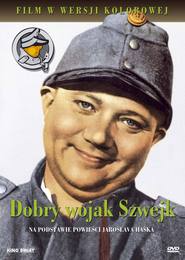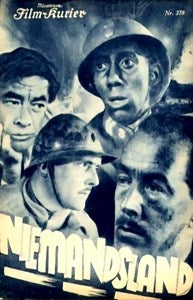
The annual conference of the International Federation of Film Archives (FIAF) was hosted this year by the Cinematheque of Macedonia (Kinoteka na Makedonija) in Skopje. Given the 100th anniversary of the beginning of World War I and Macedonia’s status as a province of Serbia at that time, a symposium and accompanying evening film program on the war seemed a natural fit. Films screened included numerous documentaries, such as Léon Poirier’s Verdun, Vision of History (1928), UCLA Film & Television Archive's restoration of With the Greeks at the Firing Line (1913), and the work of Macedonian cameramen, Janaki and Milton Manaki, as well as fiction features, such as Nerven (1919, RobertReinert) and The Good Soldier Švejk (1956, Karel Steklý).
Little did I know what a sensation With the Greeks...would be here. Shot no more than 100 miles from Skopje during the Second Balkan War, the film was considered lost, so all the archivists from the Balkans went nuts. I was overwhelmed by congratulations for rescuing their national patrimony, while a German archivist told me that we could not have given a better present to Skopje than to bring this film to FIAF. Our newsreel preservationists Blaine Bartell and Jeff Bickel are now national heroes there! Meanwhile, I also presented a paper on the film on the second day of the symposium, much of my historical analysis cribbed from a paper I wrote in graduate school in 1983 on the two Balkan wars in 1912-1913.

The symposium itself was a mixed bag of historical papers, surveys of WWI film collections, and descriptions of methodologies for cataloging and preserving war footage. Several early speakers, including representatives from Australia, Washington, D.C., Brussels, andMilan, simply described their WWI film collections. Speakers from Denmark, Berlin and the Netherlands presented their contributions to the European Film Gateway site on WWI, which makes close to 3,000 films available online for streaming from 23 European archives. With 1,261 shorts, London’s Imperial War Museum is the largest contributor to the Gateway, followed by the EYE Film Institute (Amsterdam) (291), the Danish Film Institute (230), and the Cinémathèque Royale de Belgique (185). The films not only include combat and behind the front footage, but also other documentaries shot during the war, as well as short comedies and fictional material. There are even films about WWII that were made long after the war. It's free to register for the site and then you can watch to your heart’s content. The only caveat is that many of the films, like those of the Deutsche Kinemathek, are not yet uploaded.
The issue of cataloging such films was discussed by Masaki Daibo from the National Museum of Modern Art in Tokyo, who looked at a number of Japanese documentaries that incorporated footage from The Siege of Port Arthur (1905), a film directed by Joseph Rosenthal for Charles Urban about the Russo-Japanese War. That film no longer exists, but Daibo’s research could lead to at least a partial reconstruction of the lost film. This opens the prospect of using the methodology for reconstructing other lost documentaries, given that such footage is often repurposed.
 Among the more content-oriented presentations were those of Russell Merritt (UC Berkeley) on D.W. Griffith’s World War propaganda epic, Hearts of the World (1918) with Lillian Gish; Juan Manuel Aurrecoechea’s discussion of the Mexican Revolution and American interventionism, as documented in newsreels; and Toby Haggith and David Walsh’s (Imperial War Museum) analysis of The Battle of the Ancre and the Advance of the Tanks (1917), the British follow-up to The Battle of the Somme (1916), the first and most famous propaganda documentary made during the war.
Among the more content-oriented presentations were those of Russell Merritt (UC Berkeley) on D.W. Griffith’s World War propaganda epic, Hearts of the World (1918) with Lillian Gish; Juan Manuel Aurrecoechea’s discussion of the Mexican Revolution and American interventionism, as documented in newsreels; and Toby Haggith and David Walsh’s (Imperial War Museum) analysis of The Battle of the Ancre and the Advance of the Tanks (1917), the British follow-up to The Battle of the Somme (1916), the first and most famous propaganda documentary made during the war.
The symposium was augmented by evening film screenings, often of rarely seen films, like those of Macedonia’s own Manaki brothers, who were cameramen during the 1910s and 1920s. My own personal discovery was Niemandsland (1931), a German feature film directed by Victor Trivas, about soldiers from three different countries meeting in “No Man’s Land” between the trenches and deciding they don’t want to fight each other anymore. The beginning 20 minutes is a free style montage--heavily influenced by Eisenstein, with whom Trivas may have worked--and is unlike anything else I’ve seen from the period.
All in all, well worth the trip to Skopje, thanks to the Cinematheque of Macedonia.






 Mobile Navigation
Mobile Navigation

